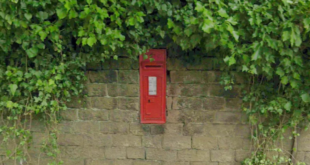Usually, only five people get a Christmas card from Kendall Platt, who, she tells me, never feels inspired to write them. This year is different. Like many people across the UK, Platt is picking up her pen more often to tell her closest friends and family how much they have been missed and that she cannot wait to see them.
“We are sending 30 cards designed by my daughter at nursery to people all over the country plus one to someone in Switzerland,” says the 34-year-old, who lives near Reading. Her enthusiasm reflects a strong return for a tradition that looked in danger of trickling away as younger generations swapped stamps and effort for social media posts and e-cards.
The i newsletter latest news and analysis
Alison March, who lives in Ascot, Berkshire, had not been able to face sending any Christmas cards for a few years since emerging from a divorce, but this year she has stocked up. “I am going to literally go through my address book,” she says. “Even people I haven’t heard from for a while will get a card, and I will feel good going to the post box with them.”
Rocketing demand for cards
Charities and independent retailers are reporting rocketing demand both for packs of Christmas cards and individual cards, putting the industry on course to top the one billion cards sent in 2019. Younger people are leading the charge, with 15 per cent of 18- to 24-year-olds planning to send more cards this year, according to research by Royal Mail. It also found that one in 10 adults plans to send up to 10 more Christmas cards than usual.
Since the Oxfam shop in Greenwich, south-east London, reopened its doors earlier this month, staff have been kept busy restocking with Christmas cards. Across the charity’s branches in England, card sales surged by 21 per cent on 2 December, the first day after lockdown was lifted.
But Amanda Pope, who heads Oxfam’s gifts arm Sourced, warns that even this might not be enough to compensate for sales missed in November, given that Christmas card sales usually bring in £1.5m for the organisation.
With a week still to go to catch the latest posting dates for first-class mail, it is too early to get a definitive picture of sales from high street shops, but many are reporting “unprecedented” online sales, from Sue Ryder to Save The Children. The latter has sold more than 21,000 packs of cards online: a 1,000 per cent rise since last year. At the British Heart Foundation, online card sales are about 600 per cent higher than they were in 2019.
More of us want to send our love
Michael Apter, the managing director of the Edinburgh-based stationer Paper Tiger, says that people began stockpiling festive designs online back in August, which prompted him to put the full range on sale in shops earlier than usual. Christmas card sales are about 50 per cent up on last year, he adds, saying: “Family cards and hand-finished cards are also performing well, especially classic designs and work by much-loved illustrators such as Sir Quentin Blake.”
For Nathan Yeowell, 44, who recently moved back from London to his home town of Pontypool, sending cards has helped to compensate for less virtual interaction with friends. He says: “I have felt a great sense of alienation from social media this year, so there was something nice about sitting down and making the effort to write Christmas cards.”
He thinks that the revival for those in their 30s and 40s is a “sign that we are turning into our parents”, not that he sees this as is a bad thing. “Sending cards is a tangible expression of friendship and affection. I’ve felt more affection for the cards I have received than in previous years,” Yeowell adds.
A great Bitish tradition
Sending cards is a British tradition: Henry Cole, the founding director of the Victorian and Albert Museum in London, sent the first batch of Christmas cards in 1843. The institution is home to the national collection of cards for all occasions and has 30,000 examples, more than half of which celebrate Christmas. Britons send more cards per capita than any other country in the world, valuing the industry at £1.7bn last year according to the Greetings Card Association, a trade body.
Not everyone is feeling the love, however. A quick Twitter poll by i unearthed plenty of Christmas card refuseniks, with many citing inertia. “Just… can’t… be… bothered,” one person commented. Ben Farey, 44, from London, summed it up, saying: “I do hate myself for the fact that I no longer send cards. They are lovely to receive.”
Dear Santa…
It’s not just cards that get sent at Christmas – letters from all over the world are mailed to Santa each December. And for the past 20 years, Father Christmas – with the help of the Royal National Institute of Blind People (RNIB) – has made sure that children with a vision impairment get a very special reply. He sends messages that are available in accessible formats including audio and large print.
Last year, 1,345 of them were sent to blind and partially sighted children across the UK. If you know someone who would like to hear from Santa, email him at santa@rnib.org.uk by Monday 21 December 2020. For more information, as well as the Christmas shop and ways to support the RNIB, go to www.rnib.org.uk
Source link



